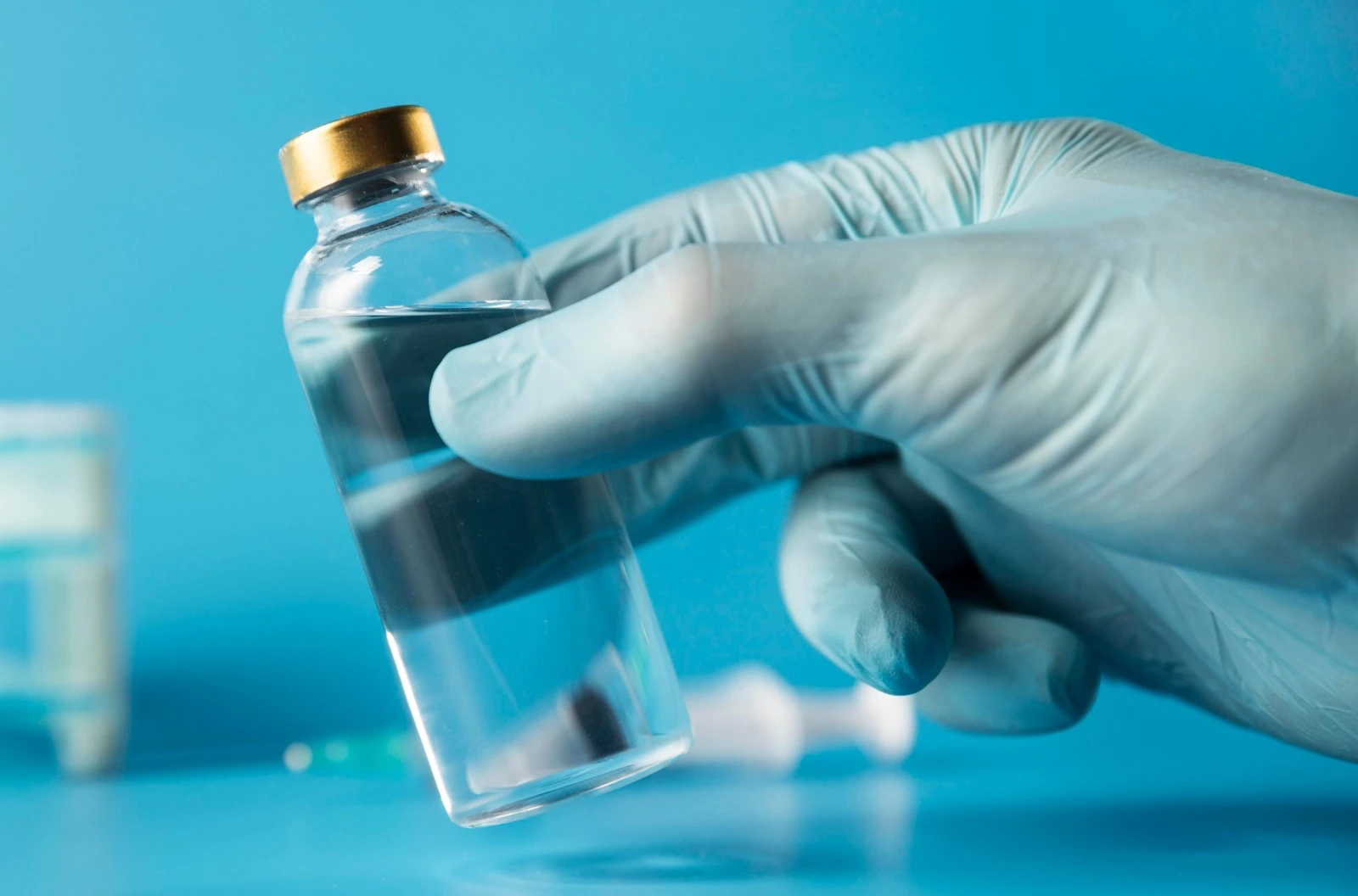TABLE OF CONTENTS
Menu
TABLE OF CONTENTS
Menu
Propargyl alcohol, with its notable versatility and reactivity, is a key player in various industrial and pharmaceutical fields. Its unique structure enables a wide range of applications, from serving as a corrosion inhibitor to playing a pivotal role in organic synthesis. Additionally, derivatives like propargyl alcohol propoxylate and ethoxylate extend its utility further, enhancing products across sectors. This article explores the multifaceted uses of propargyl alcohol and its significant impact on modern chemistry and industry.
Propargyl Alcohol Uses
Propargyl alcohol, known for its distinctive chemical properties, plays a crucial role in numerous applications across various industries. Its ability to act as a building block for complex molecules makes it indispensable in chemical synthesis, while its functional qualities lend it to diverse practical uses.
Chemical Synthesis and Pharmaceuticals
In the realm of organic chemistry, propargyl alcohol is valued for its reactivity, particularly in the synthesis of alkynes, polymers, and pharmaceutical intermediates. Its alkyne group serves as a pivotal point for coupling reactions, enabling the construction of complex molecular structures essential in drug development. This capability positions propargyl alcohol as a fundamental reagent in creating active pharmaceutical ingredients (APIs), showcasing its contribution to medicinal chemistry.
Corrosion Inhibition
As previously discussed, propargyl alcohol acts as an effective corrosion inhibitor, especially in metalworking fluids and industrial cooling systems. By forming a protective layer on metal surfaces, it significantly reduces the rate of corrosion, thereby extending the lifespan of metal parts and equipment. This application underscores its importance in maintaining the integrity and functionality of industrial machinery.
Material Science and Polymer Production
Propargyl alcohol’s utility extends to material science, where it is employed in the creation of specialty polymers and composites. Its inclusion in polymer formulations can introduce desirable properties such as thermal stability, mechanical strength, and chemical resistance, making it a key ingredient in advanced materials used in aerospace, automotive, and electronics.
Agricultural Chemicals
In agriculture, propargyl alcohol serves as a precursor for synthesizing herbicides and pesticides. Its effectiveness in controlling weeds and pests contributes to higher crop yields and improved food security, highlighting its role in supporting agricultural productivity.
Personal Care and Cosmetics
Leveraging its solubility and reactivity, propargyl alcohol finds applications in personal care products and cosmetics. It can act as a solvent or a reactive intermediate in formulating skincare products, hair treatments, and fragrances, enhancing their performance and consumer appeal.
How Does Propargyl Alcohol Corrosion Inhibitor Work
Corrosion, a relentless challenge in industrial environments, leads to significant material degradation and economic loss. Propargyl alcohol emerges as an effective corrosion inhibitor, particularly in metalworking and water treatment systems. Its mechanism of action is rooted in chemistry and surface science, offering protection to metals by forming a protective layer that mitigates corrosion processes.
Chemical Interaction and Surface Protection
Propargyl alcohol works by adsorbing onto the metal surface, creating a thin film that acts as a barrier between the metal and corrosive agents such as water, oxygen, and salts. This protective layer significantly reduces the rate of anodic and cathodic reactions involved in the corrosion process. The efficiency of propargyl alcohol as a corrosion inhibitor is influenced by the nature of the metal, the environment, and the concentration of the inhibitor.
Formation of a Complex Layer
At the molecular level, propargyl alcohol interacts with metal ions to form a complex layer on the metal surface. This layer is less reactive to environmental factors that typically accelerate corrosion, such as pH changes and the presence of aggressive ions. The effectiveness of propargyl alcohol in preventing corrosion is attributed to its alkyne group, which facilitates strong adsorption to the metal surface, enhancing the stability of the protective film.
Application in Various Environments
The versatility of propargyl alcohol as a corrosion inhibitor is evident in its wide range of applications. It is particularly beneficial in acidic environments, commonly found in industrial processing and water treatment facilities, where it significantly prolongs the lifespan of metal equipment and structures. Furthermore, its use is advantageous in systems where the presence of other types of inhibitors might introduce environmental or health concerns.
Propargyl Alcohol in Organic Synthesis
Propargyl alcohol is a cornerstone in the domain of organic synthesis, where its unique structure and reactivity open avenues for crafting complex organic molecules. Its significance in this field lies in its dual functionality, possessing both an alkyne group and a hydroxyl group, which enables a wide array of chemical transformations.
Versatile Reactivity
The alkyne group in propargyl alcohol is a reactive site for various catalytic reactions, including alkyne metathesis, cycloadditions, and nucleophilic additions. These reactions are foundational in constructing carbon-carbon and carbon-heteroatom bonds, pivotal in synthesizing natural products, pharmaceuticals, and polymers. For instance, the Sonogashira coupling, a reaction where propargyl alcohol acts with aryl or vinyl halides in the presence of palladium and copper catalysts, is extensively used to form carbon-carbon bonds, enhancing the molecule’s complexity and functionality.
Synthesis of Heterocycles
Propargyl alcohol’s utility shines in the synthesis of heterocyclic compounds, which are critical in medicinal chemistry. The propensity of the alkyne group to undergo cyclization reactions allows for the formation of various heterocycles, essential structures in numerous bioactive molecules. This ability to construct ring systems makes propargyl alcohol invaluable in developing new drugs and understanding biological mechanisms.
Precursor to Advanced Materials
Beyond pharmaceuticals, propargyl alcohol serves as a precursor in creating advanced materials. Its incorporation into polymer chains, through reactions like the click chemistry-based azide-alkyne cycloaddition, results in materials with enhanced mechanical properties and thermal stability. Such polymers find applications in coatings, adhesives, and electronics, highlighting the broad impact of propargyl alcohol in material science.
Role in Green Chemistry
In the context of green chemistry, propargyl alcohol is appreciated for its efficiency and minimal environmental impact. Its reactions often proceed under mild conditions, reducing the need for harsh reagents and minimizing waste. This aspect aligns with the principles of sustainable development, emphasizing the compound’s role in eco-friendly chemical synthesis.
Propargyl alcohol’s role in organic synthesis is multifaceted, contributing significantly to the creation of complex molecules, heterocycles, and advanced materials. Its reactivity and versatility not only advance scientific research but also promote sustainability in chemical processes, marking it as an essential reagent in modern organic chemistry.
Propargyl Alcohol Propoxylate
Propargyl alcohol propoxylate represents a significant derivative of propargyl alcohol, synthesized through the propoxylation process, which involves the addition of propylene oxide to propargyl alcohol. This chemical modification extends the utility of propargyl alcohol into new domains, showcasing the adaptability of this compound in chemical synthesis and industrial applications.
Chemical Structure and Properties
The propoxylation of propargyl alcohol results in a compound that retains the reactivity of the alkyne group while introducing propoxy groups into the molecule. This alteration imbues propargyl alcohol propoxylate with unique physical and chemical properties, such as enhanced solubility in organic solvents and increased reactivity in polymerization reactions. The presence of the propoxy groups also influences the compound’s boiling point, viscosity, and compatibility with various polymers and resins.
Applications in Polymer Synthesis
One of the primary applications of propargyl alcohol propoxylate is in the field of polymer chemistry, where it serves as a monomer or co-monomer in the synthesis of specialized polymers. Its incorporation into polymer chains contributes to the development of materials with desirable properties, such as improved thermal stability, mechanical strength, and chemical resistance. These attributes are particularly sought after in industries requiring high-performance materials, including aerospace, automotive, and electronics.
Catalysis and Organic Synthesis
In addition to its role in polymer synthesis, propargyl alcohol propoxylate finds applications in organic synthesis and catalysis. The compound can participate in various catalytic processes, acting as an intermediate in the formation of complex molecules. Its utility in these reactions underscores the versatility of propargyl alcohol derivatives in facilitating diverse chemical transformations.
Surfactants and Coatings
Propargyl alcohol propoxylate also plays a role in the formulation of surfactants and coatings. Its unique structure allows for the production of surface-active agents that can effectively reduce surface tension, enhancing the wetting and spreading properties of coatings and inks. This capability is valuable in creating products with improved application characteristics and performance.
Propargyl alcohol propoxylate exemplifies the chemical versatility and broad applicability of propargyl alcohol derivatives. Its diverse uses, from polymer synthesis to catalysis and the formulation of surfactants, highlight the compound’s significance in advancing materials science and industrial chemistry. The ongoing exploration of its properties and potential applications continues to open new avenues for innovation and development.

Propargyl Alcohol Ethoxylate
Propargyl alcohol ethoxylate is a derivative of propargyl alcohol obtained through the process of ethoxylation, which involves the addition of ethylene oxide to the alcohol. This modification significantly enhances the compound’s utility, especially in the realms of surfactants and emulsifiers. Understanding the properties and applications of propargyl alcohol ethoxylate sheds light on its importance in various industrial processes and product formulations.
Chemical Composition and Attributes
The ethoxylation process introduces ethylene oxide units into the propargyl alcohol molecule, resulting in propargyl alcohol ethoxylate. This alteration impacts the compound’s solubility, making it more water-soluble while retaining its solubility in organic solvents. The increased hydrophilicity due to ethoxylation is a key factor in its effectiveness as a surfactant, enabling it to lower the surface tension between two liquids or between a liquid and a solid.
Role as Surfactants and Emulsifiers
Propargyl alcohol ethoxylate serves a critical role as a surfactant, aiding in the stabilization of emulsions by reducing interfacial tension. This property is particularly valuable in industries such as cosmetics, pharmaceuticals, and agriculture, where stable emulsions are essential for product efficacy and stability. Furthermore, its use as an emulsifier facilitates the mixing of oil-based and water-based components, improving the texture and consistency of products.
Applications in Industrial Processes
In industrial settings, propargyl alcohol ethoxylate finds applications in the formulation of lubricants, coatings, and cleaning agents. Its surfactant properties enhance lubrication in metalworking fluids, contribute to the uniform application of coatings, and increase the cleaning efficiency of detergents and soaps. Moreover, its compatibility with a wide range of chemical substances makes it a versatile ingredient in developing specialized industrial formulations.
Environmental Considerations
The development and use of propargyl alcohol ethoxylate also take into account environmental concerns. As industries move towards greener and more sustainable practices, the biodegradability and toxicity profile of surfactants like propargyl alcohol ethoxylate are closely examined. Efforts to ensure that these compounds degrade harmlessly and do not accumulate in the environment are integral to their continued use in applications where environmental impact is a consideration.
Propargyl alcohol ethoxylate stands out as a multifunctional derivative of propargyl alcohol, with wide-ranging applications stemming from its surfactant and emulsifier capabilities. Its role in enhancing product formulations across various industries underscores its value, while ongoing research into its environmental impact and biodegradability reflects a commitment to sustainability in chemical manufacturing and use.
Conclusion
In examining the diverse facets of propargyl alcohol and its derivatives, it becomes evident that this compound’s utility extends far beyond its basic chemical structure. From its critical role as a corrosion inhibitor to its foundational contributions to organic synthesis, propargyl alcohol proves indispensable across a spectrum of scientific and industrial endeavors. The exploration of its derivatives, propargyl alcohol propoxylate and ethoxylate, further reveals the adaptability and significance of propargyl alcohol in enhancing product performance, particularly in the formulation of surfactants and emulsifiers. As we continue to uncover the vast potential of propargyl alcohol and its derivatives, their importance in advancing technology, improving efficiency, and contributing to sustainable practices remains unequivocally clear, marking propargyl alcohol as a key player in the future of chemical research and application.
FAQs
Lorem ipsum dolor sit amet, consectetur adipiscing elit. Ut elit tellus, luctus nec ullamcorper mattis, pulvinar dapibus leo.
Propargyl alcohol is widely used in organic synthesis as a building block for complex molecules, serves as a corrosion inhibitor in metalworking fluids, and acts as a precursor for the production of polymers, pharmaceuticals, and its derivatives like propoxylates and ethoxylates, which find applications in surfactants and emulsifiers.
Propargyl alcohol functions as a corrosion inhibitor by forming a protective layer on metal surfaces. This barrier prevents direct contact between the metal and corrosive substances, significantly reducing the rate of corrosion and extending the lifespan of metal components in industrial systems.
In organic synthesis, propargyl alcohol is valued for its reactivity, particularly due to its alkyne group. It participates in a variety of chemical reactions, facilitating the creation of complex organic compounds, including pharmaceuticals and advanced materials, making it a key reagent in medicinal chemistry and materials science.
Propargyl alcohol propoxylate and ethoxylate are derivatives of propargyl alcohol used primarily as surfactants and emulsifiers. They enhance the mixing of water and oil phases in product formulations, improve the texture and stability of cosmetics, pharmaceuticals, and agricultural products, and are involved in the manufacture of lubricants and cleaning agents.
Yes, propargyl alcohol is considered toxic and can pose health risks if not handled properly. It may cause irritation to the skin, eyes, and respiratory system upon exposure. Adhering to safety guidelines, such as using personal protective equipment and ensuring proper ventilation during use, is crucial to minimize potential health hazards.
The environmental impact of propargyl alcohol and its derivatives is an important consideration, particularly regarding their biodegradability and potential toxicity to aquatic life. Efforts to ensure these chemicals are used and disposed of responsibly are vital to minimizing their environmental footprint, with ongoing research into greener alternatives and safer handling practices.
Propargyl bromide is primarily used as an intermediate in organic synthesis. Its reactivity makes it valuable for introducing the propargyl functional group into molecules, facilitating the synthesis of a wide range of organic compounds, including pharmaceuticals, agrochemicals, and polymers. Its ability to participate in coupling reactions and as a precursor in the formation of alkynes and other complex structures highlights its significance in chemical manufacturing and research.
Similar to propargyl bromide, propargyl chloride serves as a crucial intermediate in organic synthesis. It is utilized for incorporating the propargyl group into various molecular frameworks, playing a key role in constructing pharmaceuticals, advanced materials, and specialty chemicals. Due to its reactivity, propargyl chloride is often employed in coupling reactions, as well as in the synthesis of heterocycles and polymers, underpinning its utility in diverse chemical synthesis applications.
Contact Us
Questions or looking for a quote?





